In 2016, I rooted for the Cubs to beat the Indians in the World Series. If the Indians make it to the Series this year, I want them to win.
I have the same logic for both wishes. The Cubs had not won since 1908 and had by far the longest drought without winning a Series. So I thought a Cubs win would be a nice result. And it was, going seven games and needing extra innings for the Cubs to win the final game.
Now the honor of the longest drought is held by the Indians. They last won it all in 1948. It’s their turn. Plus they have a very good team. And one of the owners is Kansas City businessman and philanthropist John Sherman.
1920 World Series: The Indians have been in the World Series six times: 1920, 1948, 1954, 1995, 1997 and 2016. They won in 1920 and 1948, but lost the later four. Their first trip to the Series in 1920 came after a close 3-way race among the Yankees, Indians and White Sox. During the season, each team made some special baseball history.
For the Yankees, it was the addition of Babe Ruth who had played his previous six years with the Red Sox. Ruth arguably had the best season of his career. His OPS (on-base plus slugging percentages) was 1.379, and he obliterated the season home run record, hitting 54 to beat his own record of 29. Ruth’s 1920 OPS has only been topped two times – by Barry Bonds in 2002 and 2004 (a/k/a during the steroid years). But Ruth’s heroics were not enough to keep the Yankees from finishing three games back.
With three games left in the season, the Chicago White Sox were only a half-game behind Cleveland. Two of the key Sox players were Eddie Cicotte (21-game winner) and Shoeless Joe Jackson (hitting .383). On September 28, eight Chicago players were indicted for throwing the 1919 Series. Sox owner Charles Comiskey suspended the indicted players, including Cicotte and Shoeless Joe (leading to the famous headline “Say it ain’t so Joe” as the Black Sox scandal unfolded). With their lineup decimated, the White Sox lost two of their last three games and finished two games back. [In 1921, all indicted players were acquitted, but newly appointed Commissioner Kenesaw Landis banned them from baseball, making them the “Eight Men Out” in the John Sayles movie.]
Cleveland won the pennant, but tragically lost their shortstop during the season. On August 16, Ray Chapman was at the plate when he was hit in the head by a pitch thrown by the Yankees’ Carl Mays. Chapman died 12 hours later, the only player to ever be killed by an injury suffered in an MLB game.
In the National League, Brooklyn won the pennant. They entered (and have never left) the record book for a game they played on May 1 against the Braves in Boston. The game ended in a 1-1 tie when it was called for darkness when the umpire saw lights appearing in buildings across the Charles River. The teams had played 26 innings, to this day the longest MLB game by innings.
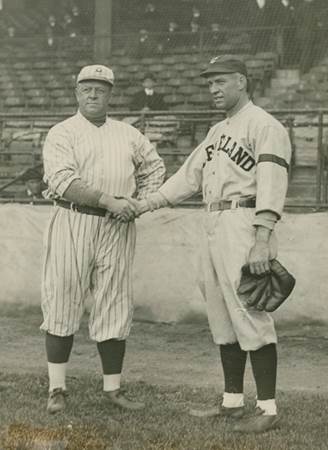
Wilbert Robinson and Tris Speaker
The Brooklyn team was called the “Robins” from 1914 to 1931 during the tenure of their Hall of Fame manager Wilbert Robinson. The team had previously been known by several names, including the “Trolley Dodgers,” but did not formally become the “Dodgers” until 1933. Cleveland had been call the “Naps” from 1903 to 1914 in honor of their Hall of Fame hitting star Napoleon Lajoie. When Lajoie was traded to the A’s after the 1914 season, the franchise became the “Indians.” The Cleveland player-manager was Hall of Famer Tris Speaker who many rank as the third best MLB center fielder of all-time (behind Mays and Cobb).
The 1920 Series was a best-of-nine affair (as it also was in 1903 , 1919 and 1921). Cleveland took the title 5 games to 2. Two historic moments came in Game 5. In the first inning, Cleveland’s Elmer Smith hit the first grand slam in World Series history. In the fifth inning, Bill Wambsganss made, to date, the only unassisted triple play in a Series game. As reported by the Cleveland Times:
“Pete Kilduff began the top of the fifth with a single to left center. When Otto Miller singled to center, Speaker’s quick throw to third drove Kilduff back to second. That brought up reliever Clarence Mitchell…who drove the ball toward right center. Second baseman Wambsganss moved slightly to his right, tipped onto his toes, sprung a little bit and grabbed the ball with his gloved hand. Never hesitating, he continued to second base, easily doubling Kilduff. Then when Wamby turned to first base he saw Miller frozen directly in front of him. Reaching out, Wamby tagged Miller easily. The crowd was silent momentarily, then, realizing what happened, broke into thunderous applause.”
While the Indians were winning the final game in Cleveland, thousands of Brooklyn fans gathered in Times Square to watch the play-by-play announcements of the game.

1948 World Series: Last year, as Cleveland headed to the World Series, I posted in Hot Stove #27 a detailed account of the Bill Veeck years as owner of the team, highlighting the team’s victory in the 1948 World Series. Below are excerpts from that post.
When Veeck bought the Indians in 1946, the team was led by pitcher Bob Feller and shortstop/manager Lou Boudreau. In 1947, Veeck added Joe Gordon and Larry Doby, the first black player in the American League. Another big decision for 1947 was to move all games to the cavernous 78,811-seat Municipal Stadium. This set the stage for a big 1948.
The Big Three on Cleveland’s 1948 pitching staff were Bob Lemon (20 wins), Gene Bearden (20) and Bob Feller (19). The lineup was strong with Lou Boudreau, Joe Gordon and Ken Keltner each knocking in over 100 runs. Larry Doby hit .301 in his first full year. Boudreau hit .355 and was named MVP. Another key player was Satchel Paige who Veeck signed on July 7. Paige and Feller (photo below) had barnstormed extensively against each other and were now teammates.
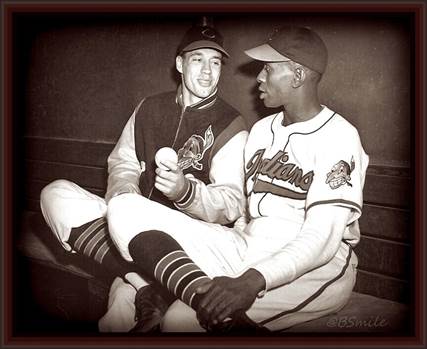
Paige had a good year, but his enduring achievement was at the gate. In his first start on August 3, the Indians drew 72,434 fans (average attendance for the year was 33,598). His next start was in Chicago, and 50,013 fans jammed Comiskey Park, the largest night game crowd in history. That record lasted only a week. On August 20, Satch was back in Cleveland and drew 78,382 for a night game.
The Indians and Red Sox ended the season with identical records of 96-58. This set up the first-ever one-game playoff in AL history. The Indians won and moved on to the Series to play the Boston Braves. If the Red Sox had defeated the Indians, there would have been the first and only all-Boston World Series.
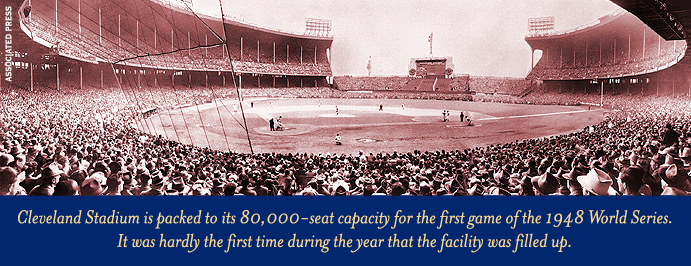
Feller opened the Series for the Indians and allowed only two hits and one run, but Warren Spahn threw a shutout. The Indians then had three pitching gems to take a 3-1 lead in the Series. The winning hit in Game 4 was a homer by Larry Doby, the first-ever by a black player in a World Series. Game 5 was in Cleveland and drew 86,288 fans, then a major league record. Feller started and took his second loss, but a milestone occurred when Satchel Paige came on in relief to become the first black pitcher in a World Series game. The teams went back to Boston for Game 6, and Bob Lemon won his second game of the Series to make the Indians the champions for the first time since 1920.
1954 World Series: The Indians developed the best starting rotation in baseball in the early 50’s with the “Big Four” of Bob Feller, Early Wynn, Bob Lemon and Mike Garcia. Feller (at age 36) was not as dominant by the time the Indians returned to the Series in 1954, and so the other three got all of the starts. They lost four straight to the New York Giants. It got off to a bad start for the Indians in Game 1 when Willie Mays made “The Catch” of a blast by the Indians’ Vic Wertz – one of the most iconic moments in Series history (https://www.youtube.com/watch?v=7dK6zPbkFnE). The Giants’ Dusty Rhodes won that first game with a pinch-hit walk-off homer in the 10th , and the Giants were on their way to a sweep. The Indians would not return to the Series for 41 years.

1995 World Series: There was no Series in 1994 because of a players strike, and this carried over to 1995 before being settled. This shortened the season to 144 games, and the Indians finished with the best record in baseball at 100-44. After winning playoff rounds against Boston and Seattle, the Indians met the Atlanta Braves in the World Series. They had beat the Braves in the 1948 Series, but the franchise was then in Boston (moving to Milwaukee in 1953 and then to Atlanta in 1966). Native Americans protested what they felt was the ultimate politically incorrect matchup between Chief Wahoo and the Tomahawk Chop (see the “curse” discussion below).
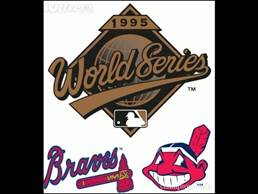
The Indians led the AL in hitting and ERA and had a great relief staff. Atlanta had Hall of Fame starting pitchers John Smoltz, Tom Glavine and Greg Maddux. The Braves won in six games with Glavine and reliever Mark Wohlers pitching a one-hitter in the final game to beat the Indians 1-0.
1997 World Series: The Indians beat the Yankees and Orioles in the playoffs and then faced the Florida Marlins in the Series. The Marlins were only in their fifth year of existence and had won the NL pennant as the wild card team. The Indians were heavily favored to win their first Series in 49 years. And they got within three outs of doing that. The Marlins were trailing 2-1 in the bottom of the ninth in Game 7. The Indians closer Jose Mesa came in and gave up a run to force the game into extra innings. The Marlins won with a run in the 11th to become the first wild card team to win the World Series. [Florida repeated in 2003, again as a wild card; the Marlins have never won their division, but have won two World Series.]
2016 World Series: The Cleveland drought for a World Series victory stood at 68 years (1948). The rival Cubs number was 108 years (1908). For the Indians, it turned out to be deja vu from 1997. They again lost in extra innings in Game 7, and the Cubs ended their century-plus drought (all as reported in Hot Stove #28).

World Series Curses: Two alleged curses ended in this century. The Red Sox were said to be under the “Curse of the Bambino” for selling Babe Ruth after the 1919 season. The curse disappeared when the Red Sox beat the Cardinals in the 2004 Series. The Chicago Cubs had not won a World Series since 1908. They had not even been in a World Series from 1945 to 2015, supposedly held back by the “Curse of the Billy Goat”. That 108-year drought and 70-year curse were laid to rest in 2016.
Not as commonly known are two curses that are said to keep Cleveland from winning a Series. One is the “Curse of Rocky Colavito” which relates to two trades of the same player. The Indians got the short end of the deal when they traded the slugger away in 1960 and also when they got him back in 1965. The “Curse of Chief Wahoo” posits that the team will not win a World Series until it ends the use of a Native American caricature as a logo. Some see the logo as harmless tradition. Others see it as a racist image. Commissioner Rob Manfred has pressured the Indians to abolish the logo. The curse apparently did not apply in 1948 – note Chief Wahoo on the uniforms of Feller and Paige above.
Damn Yankees Await: The path will not be easy for Cleveland. They first must beat the Yankees, then the winner of Houston/Boston and finally the NL pennant winner. Roger Angell, at age 97, wrote a piece in the New Yorker after the Yankees beat the Twins on Tuesday night. Angell has ties to Cleveland (via his father, going back to Cy Young and Nap Lajoie) and to his hometown Yankees. As always, a delight to read: https://www.newyorker.com/news/sporting-scene/wild-and-then-wilder-the-young-yankees-rebound/amp.
Lonnie’s Jukebox – Two Cleveland Classics from September 1954: One is that catch by Willie Mays against Cleveland on September 29. Last week, on the 63-year anniversary of the catch, Major League Baseball announced that the World Series MVP award is being renamed in honor of Willie Mays. So when the Series ends this year, be on the lookout for the player recognized as the first “Willie Mays World Series Most Valuable Player.”
The other September 1954 classic is a song recorded by the Penguins whose lead singer was Cleveland “Cleve” Duncan. “Earth Angel” was one of the early doo-wop songs that helped ignite the rock ‘n’ roll revolution.
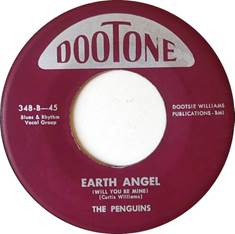
[Penguins Trivia: “Earth Angel” got the Penguins a record deal with Mercury. Their manager Buck Ram also used the Penguins as leverage to require Mercury to sign another of his acts. The Penguins never had another hit. But it worked out fine for Mercury. Buck’s other act was the Platters (the “Great Pretender” and so many others).]
For your listening pleasure, the Penguins one-hit wonder: https://www.youtube.com/watch?v=zrX8RNgawUk